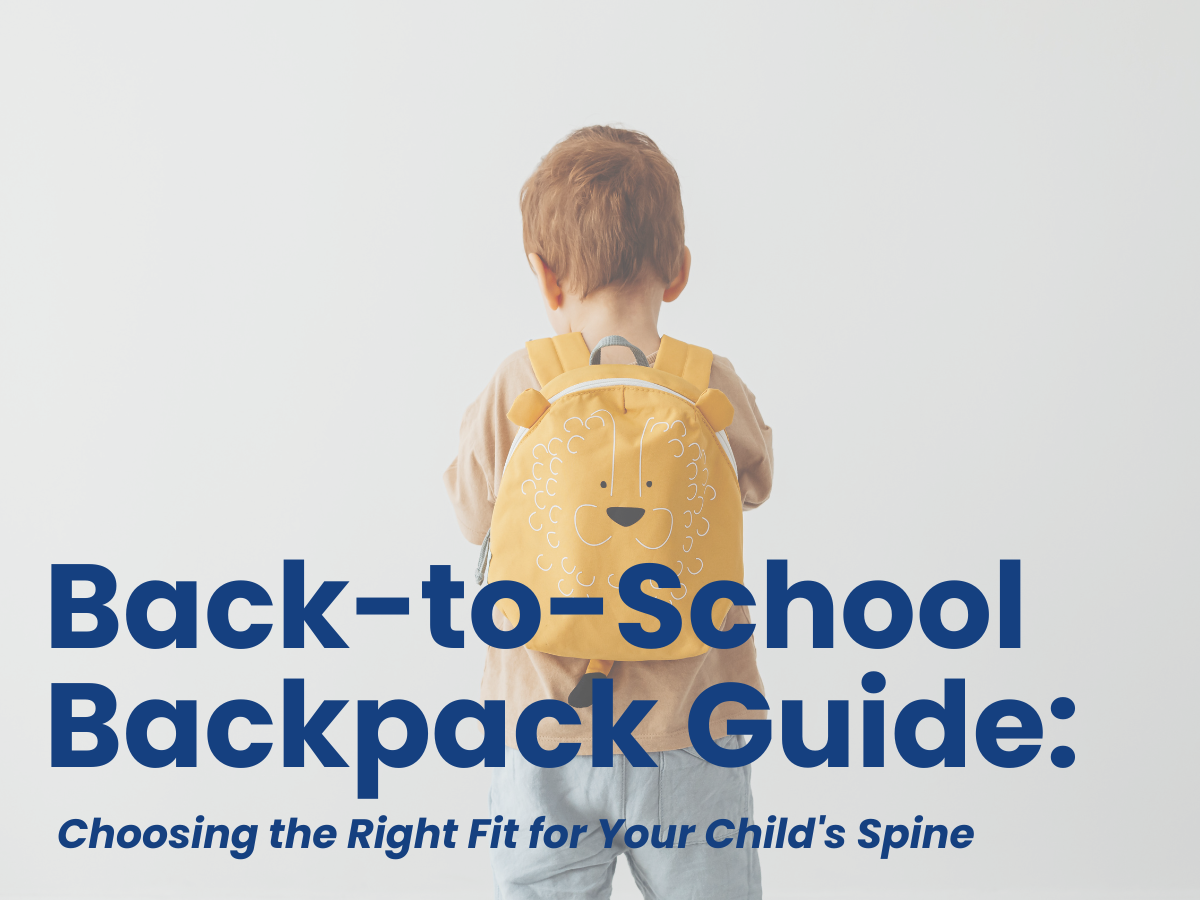As the summer winds down and the school year begins, parents and students alike are in full gear, prepping for a successful school year. One essential item on every back-to-school checklist is the backpack. However, selecting the right one is more than just picking out the trendiest design; it’s about ensuring that the backpack supports the spine and promotes good posture.
- Size Matters
The size of the backpack should be appropriate for your child’s age and body size. A backpack that is too large can cause your child to carry more weight than necessary, putting undue stress on their spine. The bottom of the backpack should rest in the curve of the lower back and not hang lower than four inches below the waist.
- Look for Padded Straps
The shoulder straps should be wide and padded. Thin, unpadded straps can dig into the shoulders, causing pain and restricting circulation. Adjustable straps are also essential for ensuring the backpack sits comfortably on the back and is evenly distributed across both shoulders.
- Consider the Weight
A good rule of thumb is that a backpack should weigh no more than 10-15% of your child’s body weight. Encourage your child to only carry what’s necessary and to use lockers or desks to store excess items during the day.
- Multiple Compartments
A backpack with multiple compartments helps distribute the weight more evenly and keeps items organized. Heavier items should be placed closer to the back, while lighter items can go in the front compartments.
- Opt for Ergonomic Designs
Many modern backpacks are designed with ergonomics in mind, featuring lumbar support and contoured designs that fit the natural curve of the spine. These features can significantly reduce the risk of back strain.
- Encourage Proper Use
Even the best-designed backpack won’t help if it’s not used correctly. Teach your child to always wear both shoulder straps, adjust them so that the backpack fits snugly against their back, and avoid slinging the backpack over one shoulder.
- Rolling Backpacks: A Good Alternative?
For students with particularly heavy loads, a rolling backpack might be a viable option. However, it’s important to note that these can be difficult to maneuver on stairs and may still require lifting at times, which could cause strain if not done properly.
- Regular Chiropractic Check-ups
Finally, regular chiropractic check-ups can help identify any potential issues early on and ensure that your child’s spine is developing correctly. We can also provide personalized advice on posture and backpack use tailored to your child’s specific needs.
By following these tips, you can help ensure that your child’s backpack supports their health as well as their education. If you have any concerns about your child’s posture or back health, feel free to reach out to our clinic for an assessment. Let’s work together to make this school year a healthy and successful one!






